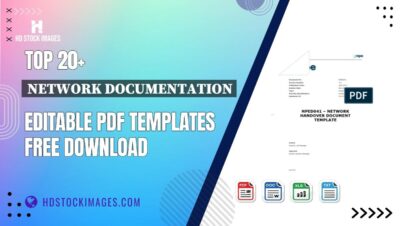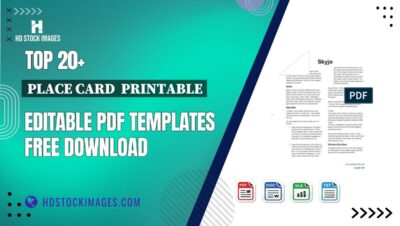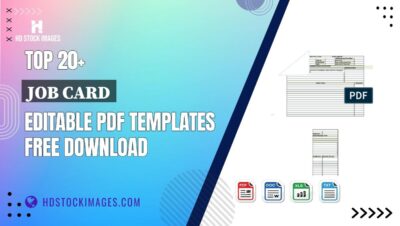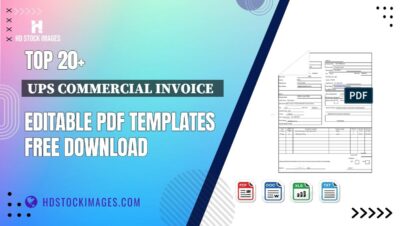In today's digital age, your online presence can significantly influence your career opportunities. One powerful tool at your disposal is your LinkedIn profile. Including it on your resume not only showcases your professional achievements but also expands your visibility to potential employers. In this post, we'll explore why sharing your LinkedIn profile on your resume is a smart move and how it can maximize your impact in the job market.
Why Include Your LinkedIn Profile on Your Resume?

Including your LinkedIn profile on your resume is more than just a trend; it’s a strategic decision that can set you apart from other candidates. Here’s why you should consider this addition:
- Showcases Your Professional Brand: Your LinkedIn profile is like a digital portfolio. It allows you to display your skills, endorsements, and recommendations in a way that a traditional resume cannot. By linking to your profile, you invite employers to delve deeper into your professional story.
- Provides Up-to-Date Information: Resumes are often static and can become outdated quickly. However, your LinkedIn profile can be continuously updated with new skills, experiences, and accomplishments. This ensures that potential employers see the most current version of your professional self.
- Enhances Networking Opportunities: Including your LinkedIn profile encourages recruiters and hiring managers to connect with you. This can lead to valuable networking opportunities, recommendations, and even job offers that might not come through traditional channels.
- Demonstrates Your Digital Savvy: In a world where digital skills are increasingly important, having an active LinkedIn profile shows that you understand how to leverage online tools for professional growth. This can be especially appealing to tech-savvy employers.
When deciding to include your LinkedIn profile, make sure it’s polished and reflects your best self. Here are a few tips to ensure your profile makes a great impression:
| Tip | Description |
|---|---|
| Complete Your Profile | Ensure every section is filled out, including your summary, work experience, and skills. |
| Use a Professional Photo | Choose a clear, professional-looking headshot that aligns with your industry. |
| Request Recommendations | Ask former colleagues or supervisors to write recommendations that highlight your strengths. |
Incorporating your LinkedIn profile into your resume is a small but impactful change that can enhance your job search. By doing so, you’re not just sharing your qualifications; you’re inviting employers to see the full picture of who you are as a professional. So, take the time to enhance your profile and include it in your resume—your future self will thank you!
Also Read This: How and Where to Add Volunteer Work on LinkedIn
3. How to Effectively Link Your LinkedIn Profile

Linking your LinkedIn profile on your resume can be a game-changer in showcasing your professional identity. But how do you do it effectively? Here are some tips to make sure your LinkedIn link adds maximum impact:
- Use a Custom URL: Instead of the default LinkedIn URL that looks like a jumble of letters and numbers, customize it to reflect your name or a professional brand. For example, instead of linkedin.com/in/john-doe-123456, change it to linkedin.com/in/johndoe. This not only looks cleaner but also makes you appear more professional.
- Include the Link in the Right Place: Position the link strategically on your resume. The top of your resume, near your name and contact information, is ideal. This ensures recruiters see it right away, making it easy for them to check out your LinkedIn.
- Use Hyperlinks Wisely: If you’re submitting your resume digitally, hyperlink your LinkedIn URL. This means that when recruiters click on the text, they’re taken directly to your profile. You can simply write “LinkedIn: [Your Name]” and link it. If it’s a printed resume, ensure you write out the full URL.
- Highlight Relevant Sections: On your LinkedIn profile, make sure that the sections you want employers to see are polished and up-to-date. Your experience, skills, and endorsements should be in line with what you’ve listed on your resume. This consistency reinforces your personal brand.
Remember, your LinkedIn profile is like an extended version of your resume. It tells the story of your professional journey—so make sure the link reflects that story well!
Also Read This: How Do I Cancel My LinkedIn Profile: Instructions for Deactivating or Deleting Your Profile
4. Best Practices for Your LinkedIn Profile Before Sharing

Before you share your LinkedIn profile, it’s crucial to ensure it’s in tip-top shape. Here are some best practices that can help you refine your profile:
- Profile Picture Matters: Choose a clear, professional photo where you look approachable. Profiles with a photo receive 21 times more profile views and 36 times more messages, so don’t skimp on this!
- Craft a Compelling Headline: Your headline should do more than just state your job title. Think of it as a mini elevator pitch. Instead of just saying “Marketing Manager,” you might say “Creative Marketing Manager | Passionate About Brand Storytelling & Digital Strategy.” This helps you stand out in searches.
- Write a Strong Summary: Your summary is where you can let your personality shine. Use this space to tell your professional story—what you’re passionate about, your career achievements, and what you can bring to potential employers. Keep it engaging and authentic.
- Showcase Your Experience: Detail your past roles and responsibilities, but focus on achievements. Use metrics to describe your impact where possible. For instance, “Increased sales by 30% in 6 months” is much more impressive than just listing job duties.
- Ask for Recommendations: Recommendations from colleagues or supervisors can add credibility to your profile. Don’t hesitate to reach out and ask for a brief recommendation; most people are happy to help!
- Engage with Content: Share articles, comment on posts, and participate in discussions related to your industry. This shows you’re active and invested in your field, making your profile more attractive to recruiters.
Before hitting “share,” take a moment to review your profile. Is it a true reflection of your professional self? Ensure it’s polished and ready to impress potential employers!
Also Read This: How to Post a Job on LinkedIn: A Complete Walkthrough
5. Examples of Resume Formats That Incorporate LinkedIn Links
When it comes to showcasing your LinkedIn profile on your resume, the format can make a world of difference. Here are some effective ways to incorporate your LinkedIn link:
1. Classic Header Format
In the header of your resume, include your name, contact details, and a direct link to your LinkedIn profile. For example:
- John Doe
- Email: [email protected]
- Phone: (123) 456-7890
- LinkedIn: linkedin.com/in/johndoe
2. Side Column Format
If you're using a two-column layout, consider placing your LinkedIn link in a side column. This keeps it visible but unobtrusive. In the left column, you might list:
- Contact Information
- LinkedIn: linkedin.com/in/johndoe
3. Skills or Summary Section
Another option is to incorporate your LinkedIn link within your summary or skills section. For example:
“Dynamic marketing professional with over 5 years of experience. Explore my LinkedIn for recommendations and a comprehensive portfolio: linkedin.com/in/johndoe.”
4. Footer Inclusion
Some resumes also feature a footer that includes links. This can be a subtle yet effective way to include your LinkedIn. An example might look like this:
“Follow me on LinkedIn: linkedin.com/in/johndoe”
5. QR Code Integration
If you want to get a bit more tech-savvy, consider adding a QR code that links directly to your LinkedIn profile. This modern touch can catch the eye of employers. Just ensure the QR code is clear and easy to scan!
These formats can help you seamlessly integrate your LinkedIn profile into your resume, enhancing your chances of catching a recruiter’s eye.
Also Read This: How to View Your LinkedIn Profile the Way Others See It
6. Common Mistakes to Avoid When Sharing Your LinkedIn Profile
Sharing your LinkedIn profile on your resume can be a great way to provide more information about your professional background, but there are some pitfalls to avoid. Here are a few common mistakes:
1. Using an Inactive Profile
Before adding your LinkedIn link, ensure that your profile is up-to-date. An inactive or poorly maintained profile can leave a negative impression. Regularly post updates, engage with connections, and showcase new projects or achievements.
2. Ignoring Privacy Settings
Ensure your LinkedIn profile is publicly accessible. If hiring managers can’t view your profile, they might skip over you entirely. Adjust your privacy settings to allow public visibility, especially for your work experience and accomplishments.
3. Not Customizing Your LinkedIn URL
A generic LinkedIn URL can look unprofessional. Customize your URL to make it neat and memorable. For example, instead of linkedin.com/in/johndoe12345, aim for linkedin.com/in/johndoe. This small change can make a big difference!
4. Failing to Highlight Key Achievements
Your LinkedIn profile should complement your resume, not duplicate it. Make sure to highlight key achievements or projects on LinkedIn that aren’t detailed in your resume. This gives potential employers more insight into your skills and experiences.
5. Overloading with Links
While it’s great to share your LinkedIn profile, avoid adding multiple links or social media accounts on your resume. A cluttered approach can distract from your qualifications. Stick to one strong link that directs to your professional presence.
By avoiding these common mistakes, you can ensure that your LinkedIn link enhances your resume rather than detracting from it. Happy job hunting!
Also Read This: How to Search for Someone on LinkedIn Without Them Knowing: Privacy Tips
7. Conclusion
In today’s competitive job market, showcasing your LinkedIn profile on your resume can provide you with a significant edge. By including a link to your profile, you allow potential employers to delve deeper into your professional background, discover your endorsements, and even see your latest accomplishments. It’s like giving them a backstage pass to the story behind your career.
Remember, the key is to ensure that your LinkedIn profile is polished and up-to-date. When you include it on your resume, you’re not just sharing a link; you’re presenting a comprehensive view of your professional identity. So, take a moment to enhance your profile with a professional photo, a compelling summary, and relevant experience. This way, you’re not only inviting people to connect but also offering them a snapshot of why you’re the right fit for the job.
As you move forward in your job search, don’t forget to tailor your resume and LinkedIn content to align with the specific roles you’re pursuing. This tailored approach will resonate better with hiring managers and can significantly improve your chances of landing an interview. In essence, sharing your LinkedIn profile on your resume isn’t just a modern twist—it's a smart strategy to amplify your personal brand and make a lasting impression.
8. Additional Resources for Job Seekers
As you embark on your job search journey, having the right resources at your fingertips can make all the difference. Here are some valuable tools and websites that can help you enhance your LinkedIn presence, polish your resume, and ultimately land that dream job:
- LinkedIn Learning: Offers a plethora of courses on professional development, networking, and enhancing your LinkedIn profile.
- Canva: A user-friendly tool to create visually appealing resumes and LinkedIn banners that stand out.
- Jobscan: A fantastic tool that helps optimize your resume and LinkedIn profile for Applicant Tracking Systems (ATS) by comparing them with job descriptions.
- Glassdoor: Provides insights into company cultures, salary information, and interview experiences from current and former employees.
- Meetup: Great for networking! Find local groups in your industry or related fields to connect with like-minded professionals.
- The Muse: Offers career advice, job listings, and glimpses into various companies’ work environments.
Utilizing these resources can empower you to not only build a robust LinkedIn profile but also navigate the job market with confidence. Remember, every bit of effort you put into refining your online presence and resume is a step closer to your career goals. Good luck!
 admin
admin








